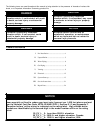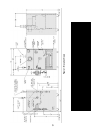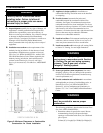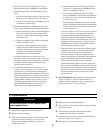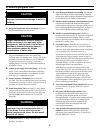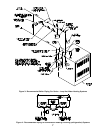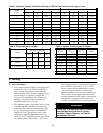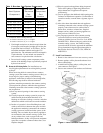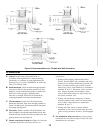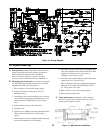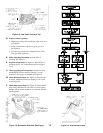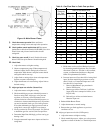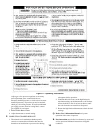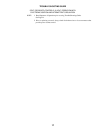
10
Table 5: Burnham Vent System Components
Figure 7: Vent Connector Installation
B. Removal of Existing Boiler. For installations not
involving the replacement of an existing boiler, proceed
to Step C.
When an existing boiler is removed from a common
venting system, the common venting system is likely to
be too large for proper venting of the remaining
appliances. At the time of removal of an existing boiler,
the following steps shall be followed with each
appliance remaining connected to the common venting
system placed in operation, while the other appliances
remaining connected to the common venting system are
not in operation:
(a) Seal any unused openings in the common venting
system.
(b)Visually inspect the venting system for proper size
and horizontal pitch and determine there is no
blockage or restriction, leakage, corrosion, and other
deficiencies which could cause an unsafe condition.
(c) Insofar as is practical, close all building doors and
windows and all doors between the space in which
the appliances remaining connected to the common
venting system are located and other spaces of the
building. Turn on clothes dryers and any appliance
not connected to the common venting system. Turn
on any exhaust fans, such as range-hoods and
bathroom exhausts, so they will operate at maximum
speed. Do not operate a summer exhaust fan. Close
fireplace dampers.
(d)Place in operation the appliance being inspected.
Follow the Lighting (or Operating) Instructions.
Adjust thermostat so appliance will operate
continuously.
(e) Test for spillage at the drafthood relief opening after
5 minutes of main burner operation. Use the flame of
a match or candle, or smoke from a cigarette, cigar or
pipe.
(f) After it has been determined that each appliance
remaining connected to the common venting system
properly vents when tested as outlined above,
return doors, windows, exhaust fans, fireplace
dampers and any other gas burning appliance to
their previous conditions of use.
(g)Any improper operation of the common venting
system should be corrected so the installation
conforms with the National Fuel Gas Code, NFPA
54/ANSI Z223.1. When resizing any portion of the
common venting system, the common venting
system should be resized to approach the minimum
size as determined using the appropriate tables in
Part II in the National Fuel Gas Code, NFPA 54/
ANSI Z223.1.
C. Install Vent Connector.
1. Remove vent connector from vent accessory carton.
2. Remove gaskets, orifice plate and hardware from
blower outlet flange.
3. Assemble orifice plate gaskets, orifice plate, and
vent connector. See Figure 7.
4. Secure vent connector with washers and locknuts.
3. Vent length restrictions are based on equivalent feet
of vent pipe (total length of straight pipe in feet plus
5 equivalent feet for each 45° or 90° elbow). Do not
exceed the maximum certified vent length of 25
equivalent feet. The minimum certified vent length is
7 equivalent feet. Do not include vent terminal or
vent connector in equivalent feet calculations.
4. Do not install venting system components on the
exterior of the building except as specifically required
by these instructions.
Vent System
Component
Burnham
*Cartoned
Part
Number
Burnham
Component
Part
Number
3" Dia. Pipe x 1 Ft 61160112 8116135
3" Dia. Pipe x 3 Ft 61160101 8116058
3" Dia. Pipe x 4 Ft ** 8116176
3" Dia. Pipe x 5 Ft 61160111 8116059
3" Dia. 90° Elbow 61160121 8116060
3" Dia. 45° Elbow 61160131 8116061
* Complete with Locking Band(s)
* * 6116033 Contains (4) 4 ft. lengths
6116040 Contains (2) 4 ft. lengths



